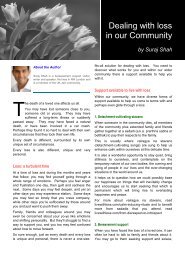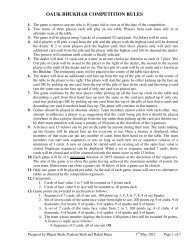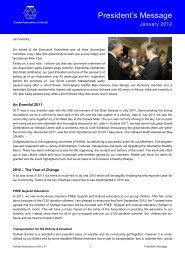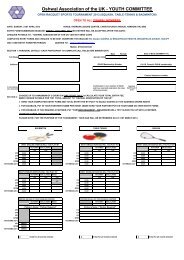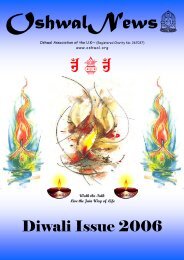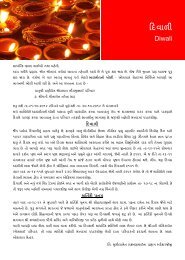Third Edition E-Magazine | April 2013 | www ... - Oshwal Centre
Third Edition E-Magazine | April 2013 | www ... - Oshwal Centre
Third Edition E-Magazine | April 2013 | www ... - Oshwal Centre
You also want an ePaper? Increase the reach of your titles
YUMPU automatically turns print PDFs into web optimized ePapers that Google loves.
~ Whose planet are we living on? ~<br />
beings. In a single group he combined the remaining life<br />
forms, with two to five senses, as mobile living beings.<br />
On contemplation, we can appreciate that Mahavir gave<br />
five times as much importance to the elemental beings<br />
compared to the mass of mobile beings, which, even with<br />
higher levels of senses were grouped into one.<br />
Having established the natural elements and plants as<br />
living beings with consciousness, perception and feeling,<br />
Mahavir proceeded to define sinful acts against these<br />
elements and prohibited such acts of violence.<br />
Here are some quotes from the Acharanaga Sutra:<br />
elements defined as life, it is absolutely clear that Mahavir<br />
preached preservation of the natural environment through<br />
the precept of Ahimsa over 2,500 years ago.<br />
As the most intelligent beings on earth, we, humans are<br />
responsible for the environment of weal or woe.<br />
Environment is universal, and as a result we will have to<br />
live in whatever environment we create. The message<br />
here is for the humans to take care of the elements if the<br />
elements are to take care of all other life forms on earth<br />
including the endangered human species!<br />
Mahavir blamed the desire for ownership and<br />
accumulation as the single major cause of violence.<br />
Desire for ownership is tantamount to attachment.<br />
“See! There are beings individually embodied (in earth; not<br />
one all-soul). See! There are men who control themselves … …<br />
… … because one destroys this (earth-body) by bad and<br />
injurious doings, and many other beings, besides, which he<br />
hurts by means of earth, through his doing acts relating to<br />
earth.” I.1.2. (2)<br />
“He who injures these (earth-bodies) does not comprehend<br />
and renounce the sinful acts; he who does not injure these,<br />
comprehends and renounces the sinful acts. Knowing them, a<br />
wise man should not act sinfully towards earth, nor cause<br />
others to act so, nor allow others to act so. He, who knows<br />
these causes of sin relating to earth, is called a reward-knowing<br />
sage. Thus I say.” I.1.2. (6)<br />
The messages are repeated for water, fire, plants, mobile<br />
life and wind. Thus, Mahavir has preached total<br />
protection of the natural elements of ecology as well as<br />
human and sub-human life. He further warns that<br />
violence against any one of the life forms is violence<br />
against all life forms.<br />
“He who perfectly understands (what has been said in the<br />
preceding lesson) and follows the (faith) to be coveted, should<br />
therefore do no sinful act, nor cause others to do one.<br />
Perchance he meditates a sin (by an act against only) one (of<br />
the six aggregates of lives); but he will be guilty (of sin<br />
against) every one of the six ... … … … …” I.2.6. (1)<br />
“… … … all breathing, existing, living, sentient creatures<br />
should not be slain, nor treated with violence, nor abused, nor<br />
tormented, nor driven away.” I.4.1. (1)<br />
With Ahimsa, defined as non-violence in thought, speech<br />
or deed, to be observed in direct and indirect activity<br />
against even the lowest form of life, AND the ecological<br />
Here are some quotations related to the precept of<br />
aparigraha from Saman Suttam, a collection of verses<br />
from diverse Jain scriptures:<br />
“Owing to attachment, a person commits violence, tells lies,<br />
commits theft, indulges in sex and develops a wish for unlimited<br />
hoarding.” (140)<br />
“A person who hoards even the slightest amount of an animate<br />
or inanimate thing or gives consent to someone for hoarding,<br />
will not escape from misery.” (141)<br />
Desire for ownership drives our action for acquisition.<br />
Intensity of desire generates intensity in action. Intensity<br />
can be directly related to irrationality. Irrationality leads to<br />
anger, greed, deceit, ego, falsehood, stealing, adultery,<br />
destruction, pollution, terrorism and other vices.<br />
When one becomes engrossed in the thought of “owning”<br />
someone or something, one may go to any length to<br />
satiate that desire.<br />
Our ever-growing desire for material things are the cause<br />
of degradation and depletion of the ecosystems. Each<br />
and every article which we possess, or desire to possess,<br />
is manufactured from natural resources. Thus, overuse<br />
and misuse of these resources creates imbalance in<br />
ecology.<br />
Let us not congratulate ourselves for having successfully<br />
authored our disaster through producing infinite types and<br />
quantities of material objects for our comfort. In reality,<br />
we have guaranteed extinction of life by not<br />
understanding Mahavir and not respecting the natural<br />
elements.<br />
<strong>Oshwal</strong> News E-magazine of the O.A.U.K. 7 <strong>April</strong> <strong>2013</strong> <strong>Edition</strong>





